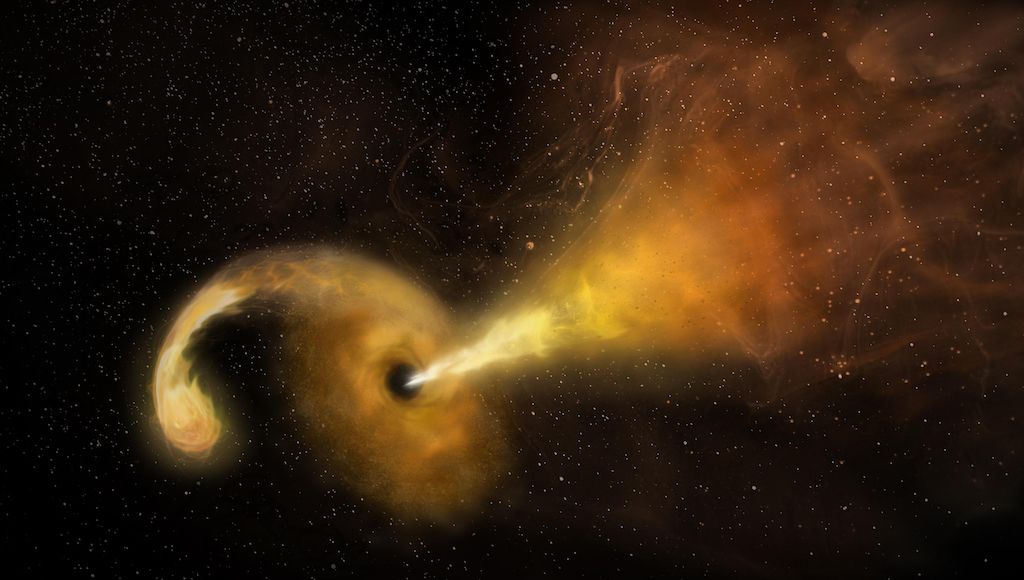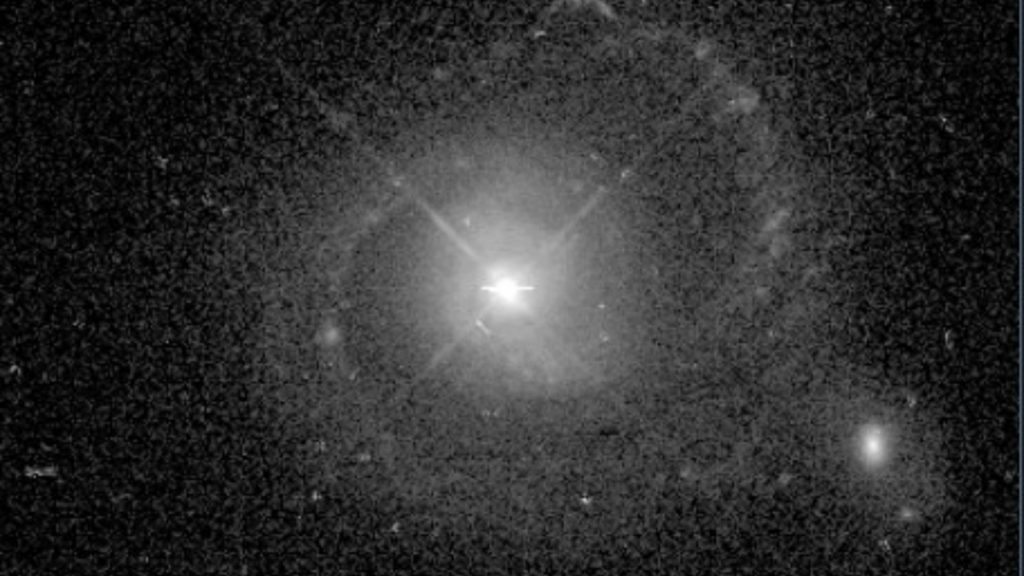Hubble Telescope Maps High-Speed ‘Burps’ from Nearby Supermassive Black Hole for the First Time
Observing with the Hubble Space Telescope, astronomers have been able to map the jets of high speed plasma which have been ejected from the quasar I Zwicky 1. These outflows are traveling at an incredible speed of 6. 5 million mph which is roughly about 8,500 times the speed of light.
It is thought that most galaxies contain a supermassive black hole at their core, but not all of these galaxies show the level of activity that is present in quasars. For example, the one in the Milky Way, Sagittarius A*, is not very active as it does not consume any significant amount.
The glowing quasar I Zwicky 1 and its ravenous supermassive black hole reside in the heart of the galaxy Zwicky 1, nearly 847 million light-years from Earth in the constellation Pisces. However, it should be noted that many more quasars are located even farther from us in the young universe at billions of light years.
The proximity of quasar “I Zwicky 1” is advantageous for understanding the extreme environment behind AGN. These regions are so bright that they can actually shine with a light brighter than the total light from all the galaxies nearby, including the flashes or ‘burps’ of matter from the surroundings of the supermassive black hole.
The black hole in the center of Zwicky 1 has been aged to have a supermassive mass of roughly 9. 3 million suns. Is thought to eat matter at an astonishing rate, creating powerful jets that produce high velocity ‘burps. ’ Outflows from this have only been described in detail recently, as observed by a team of astronomers from the Netherlands Institute for Space Research (SRON).
Thus, as team leader Anna Juráňová pointed out that “I Zwicky 1 has some specific features. Other quasars show similar outflows but conditions in I Zwicky 1 quasar are extraordinary due to the combination of our observing direction and spectrum line widths. This allows us to learn more about the specifics of the phenomenon. We have got very good understanding of the motion of ionized gas in a quasar.
How quasars get their outflows
All black holes, including supermassive black holes, have an outer boundary known as the event horizon. This is the stage at which the attraction of the black hole is so intense that not even light can leave because of the escape velocity.
The outflows from quasars, however, are able to escape this event horizon. This is because the material making up the outflows never actually crosses the event horizon at the base of the jet.

If a supermassive black hole has matter around it in the form of gas, dust or the remnants of a star which has been torn apart by the huge gravitational pull of the black hole then that matter will have angular momentum. It cannot therefore fall directly into the black hole but instead forms a flat rotating structure known as an “accretion disk”.
The matter in the accretion disk gradually spirals inward towards the central supermassive black hole. However, black holes are notorious for being anything but neat when consuming their food. The black hole does not devour all the material present in accretion disks; some of the charged particles are deflected towards the poles by the force of magnetism.

These magnetic fields cause the trapped particles to move at near light speed and they are finally ejected out as tightly collimated beams. These jets, together with the radiation, repel the clouds of matter and create the outflows that were described in the case of I Zwicky 1.
Observing the celestial objects with the help of the Hubble telescope, Juráňová and her team found out important information about the nature of four different plasma outflows associated with I Zwicky 1. These outflows were identified as moving at extremely fast velocities of between 134,000 mph (217,000 kph) and as fast as 6. 5 million mph (10. 5 million kph,), 200 times the speed of sound , 8,500 times the speed of light and 0. 01c.
Moreover, the researchers also noted that one of these outflows appeared to be ‘confined’ by the shadow of the outflow that is formed due to the burp of black hole. This phenomenon occurs when ultraviolet light that is emitted from the accretion disk interacts with elements like nitrogen, oxygen and carbon within disjointed matter clouds in a forced expulsion.
This finding does not only confirm that astronomers have observed this mechanism, but also suggests that the surrounding region of I Zwicky 1 is more active than the AGN regions of other quasars.
Based on the obtained data, Juráňová stated that even more gas from the disk surrounding the black hole is being lifted and expelled. This new knowledge puts us on the cusp for understanding how giant black holes form and evolve as well as how they influence the surrounding environment.
The team’s research was published online Tuesday (June 11) in the journal Astronomy & Astrophysics.
Do not forget to share your opinion with us to provide you with the best posts !




0 Comments